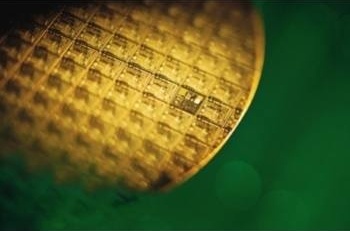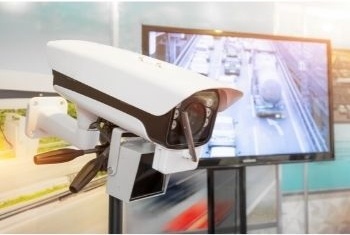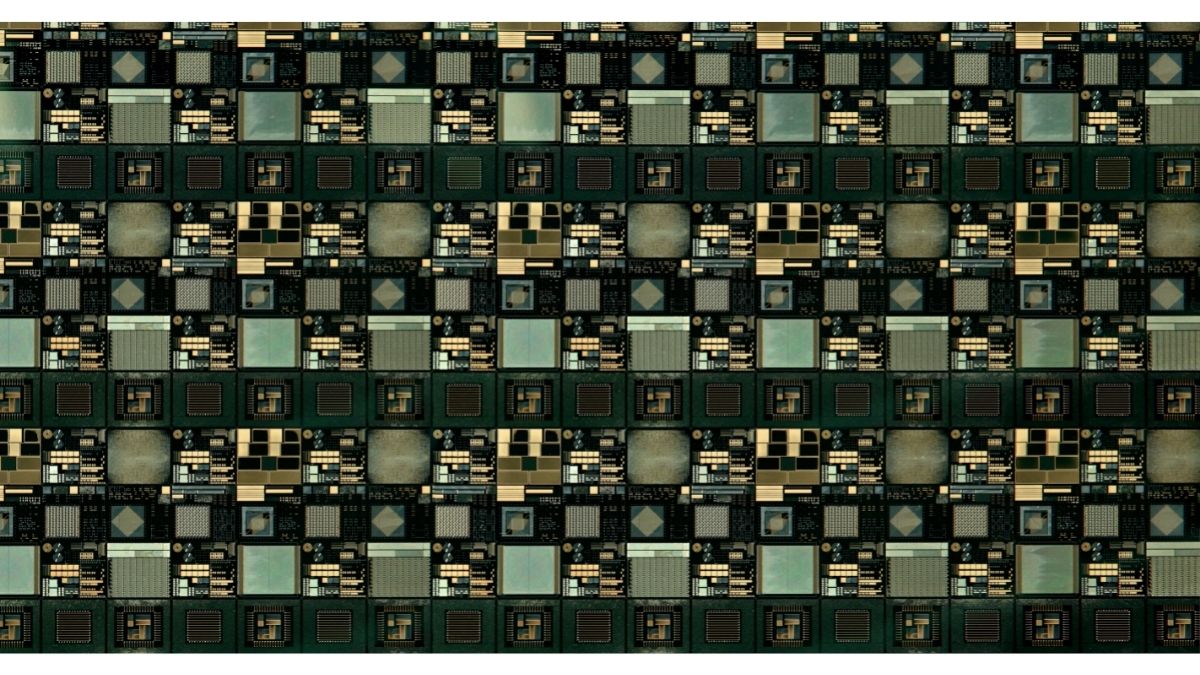The shortage of microprocessors is a production crisis that occurred due to political, trade and environmental factors. This lack affects in the short and medium term, the comfort of human life, access to new technologies and the production of electronic security devices.
by Security Sales
Now, although the pandemic has the responsibility of accentuating the impact of this fall in production, it was not the trigger. It is necessary to understand that this situation is the interweaving of variables that acted as a breeding ground, including the scarcity of high purity monocrystalline silicon, an abundant raw material in its non-pure form, which is obtained on an industrial scale from quartz sand. At the Coffee Table Argentina - Global Crisis of Semiconductor Supply, a virtual event organized by the Latin American Security Association (ALAS), the aspects that help to understand the reason for the current shortage of this technology were presented in a simple way.
The members of ALAS indicated that, at a general level, what has had the greatest negative impact on the global market is that the increase in demand for these processors was not accompanied by the forecast, which generated delays in the production of mass consumption technology and an unsuspected increase in the amount. TSMC (Taiwan Semiconductor Manufacturing Co), the world's leading producer of semi-conductors, announced in August 2021 the increase of up to 10% in the production prices of 7 nanometer (nm) chips and up to 20% in chips of 16 and more nm. In addition, this year the Taiwanese company United Microelectronics Corporation (UMC), second in production globally, reported an increase of 10% in the first quarter, added to the slight increase it had already had in 2021.
In the economic aspect, this increase in costs causes great surprise, since the constant development of this technology had meant that, for at least the last 20 years, stable prices and a high supply were maintained.
Increase in demand and decline in raw materials
Nowadays the level of chips that are required for everyday items has grown exponentially, more when it comes to products that have IoT (the Internet of Things) or require computational power for their operation. An example of this is cars, according to the American firm Deloitte, a mid-range car uses around 3,000 and a high-end unit more than 10,000 chips. This is why the findings of the report Things Matter 2019: the IoT user experience in Spain, presented by Telefónica Tech, which indicated an increase of 66% of consumers of connected devices and the tripling of cars connected to the network, compared to the data of that same research in 2017.

The demand and crisis of this technology, also called "semiconductors" allows us to better understand the fall in production of the automotive industry. For example, the Spanish Association of Automobile and Truck Manufacturers (ANFAC) reported decreases in 25.3% of production for the 2020 period due to the lack of raw material. Another factor that overwhelmed the demand is the use of these components in mass consumption products such as cell phones. According to Gartner, a consulting firm specializing in information technology research, the top 10 original equipment manufacturers (OEMs) increased their semiconductor spending by 10% in 2020, where Apple stood out, which wanted to guarantee resources for its successful AirPods and Samsung that covered the strong demand for enterprise solid-state drives (SSDs) for data centers.
That is, a whole generation of new merchandise that requires electronic components brought with it a level of sales without precedent. Gartner said global semiconductor market revenue increased 25.1% in 2021. And he added to that strong demand, the rise in the prices of raw materials and logistical problems. Where it is also worth considering the great impulse that 5G gives to the IoT trade.
To this panorama it should be added that, at the end of 2021, China, the largest silicon manufacturer in the world, cut production to reduce its energy consumption. Which led to an increase in the cost of this material of 300%. According to El Confidencial, this increase "and the increase in the price of up to 328% of maritime transport, further complicates the proper functioning of supply chains at a global level", which translates into increased prices and lower availability for the end customer.
Political conflicts increase the crisis

It is important to mention that the political scenario has been another space of dispute around semiconductors. As background, at the beginning of 2018, the United States government accused the company Huawei of espionage through its devices, framing this in the impact on national security. To this struggle, which had diplomatic connotations, was added the recrimination of the then US president, Donald Trump, who linked the case to a "trade war". As a result of this, the Chinese technology giant was excluded from Google services, could not continue operating with the Android system and was closed the sale of microcomponents of American manufacture. Punishments and blockades that remain to date.
So, in April 2021, during the 18th Huawei Analyst Summit, Eric Xu, rotating chairman, claimed that the sanctions imposed by the United States on Asian companies would be responsible for creating panic in the market and a buildup of semiconductor stock. After this, Huawei claimed that confidence in the supply chain had been damaged and that its strategy would be to prefer Asian manufacturers for its future chips.
However, at a press conference in November 2021 Samsung announced the construction of a chip manufacturing plant in Austin (Texas), which is expected to begin production by the end of 2024. In this same sense, Intel revealed on March 15 of this year its plans to build a state-of-the-art semiconductor factory in Magdeburg (Germany), which adds to the new plants in Arizona and Ohio that it had already announced. For his part, since the beginning of this year, President Biden has been promoting a bill to strengthen semiconductor research and manufacturing in his country.
It is even easier to understand the reason for the strategy to build plants in the USA and the European Union, when one takes into account that, in 1990, Europe occupied more than 40% of semiconductor production and the United States 35%. But to date, Asia has accumulated 70%, the US ranks second with 22% and Europe is relegated to 8%. Hence, political acts in the West aim to have greater autonomy. Undeniable projection if one takes into account the atmosphere of distrust.
Within this particular scenario, two geopolitical situations stand out; the first is the China-Taiwan conflict, since tensions in the cultural and political relations of both governments are not resolved, where Beijing considers the island part of its territory, although it has independence and autonomy. Meanwhile, opinions are divided within Taiwan and the geographical proximity gives it military vulnerability.
The second is the conflict between Russia and Ukraine. According to Techcet, an organization that specializes in market research, this triggers a complex position for the U.S. In the U.S., more than 90% of the supplies of semiconductor-grade neon (the main component for generating laser light, vital in the photolithography process that creates wafers for microcomponents) come from Ukraine, while 35% of palladium (a metal used in memories and sensors) is imported from Russia. An example of what this war can cause at the commercial level is that, in 2014, with the annexation of the Crimean peninsula, neon prices increased by 600%.
Weather problems and environmental impact

The production of microcomponents also influences the environmental crisis, so it is also promoted to be more sustainable. According to research from Harvard University and Facebook Inc, Chasing Carbon: The Elusive Environmental Footprint of Computing, presented at the IEEE 2021 International Symposium on High-Performance Computing Architecture, semiconductor companies need a lot of energy to make chips, a demand that is expected to increase, as next-generation manufacturing is expected to increase. where the wafers for microprocessors are 3 nm, it consumes up to 7700 million kilowatt-hours per year.
While companies like TSMC have renewable energy strategies that will account for 20% of their factories' annual electricity consumption, to reduce the average carbon intensity, these improvements are insufficient, as research shows that hardware manufacturing represents, and will continue in that trend, a large part of the carbon footprint of computing.
In addition to this, a high amount of water is used in the production of electronic components, such as semiconductors, microprocessors and other silicon-based devices, an average of 130 liters per chip. This expenditure of water resources has been worrying, as the largest reservoirs in Taiwan (Baoshan, Zeng-wen and Techi) experienced, from March 2019 to March 2121, a reduction in the volume of water between 73.3% and 96.2%. According to Lena Chang, a member of the local branch of Greenpeace, droughts in that region will be increasingly common, because rising temperatures globally reduce spring rain and the frequency of typhoons in the area.
For its part, TSCM has acknowledged that its water expenditure per day is 156,000 tons, about 60 Olympic swimming pools. Not to mention, it is required under conditions of high purity, thus affecting the availability of water for human consumption. In April 2021, the Water Resources Agency prioritized the use of water for microprocessor development over crop irrigation, in response to the drought that ravaged Taiwan.
To conclude, the increase in the price of microcomponents and the economic recession caused by the pandemic have contributed to global inflation. In that sense, the International Monetary Fund, in its World Economic Outlook Report updated to January of this year, predicts that high inflation will continue more than contemplated, where "cuts in supply chains and high energy prices will persist in 2022." Therefore, while there are alternatives to the production of semiconductors with carbon-based materials, until the supply/demand ratio of chips is normalized, this product will continue to generate important changes in the economy.
Finally, the estimated dates with the normalization of production have to do with the start-up of the new factories, where Asia is not far behind. Namely, the manufacturer TSMC has two new factories in Taiwan in the pipeline, the first in tainan Science Park, for 3 nm wafers, which is expected to be in production this year; the second in the city of Kaohsiung that is supposed to start operations in 2024.
Technological considerations

The chips are composed of transistors, while the nanometers (nm) reflect the size of the transistors, the smaller they are, the greater the amount enters the same surface and as a consequence the efficiency and power is increased, because the smaller the transistor, the faster the energy will pass through it. That's why technology is getting smaller and more powerful. In the manufacture of microprocessors, which is a photolithographic process, silicon wafers are used where the transistors that will make up each microprocessor are "drawn". It is a complex and delicate process where different layers are "printed".
So, as this technology becomes smaller and more powerful, the production of wafers is more expensive because of its complexity. Additionally, silicon has a minimum limit for its use of 1 nm, as the material is not suitable for the creation of smaller transistors. In 2005 90 nm wafers were produced and now 5 nm wafers are produced for the Iphone 13, they have even been developed from 3nm. Hence, the new proposals seek other materials that allow these measures to be further reduced.
Microprocessors for video surveillance and electronic security
Semiconductors are a vital part of the electronics that make up video surveillance systems. In the control rooms the use of screens requires a large number of microcomponents, but perhaps where they are required in a high quantity and quality is in the choice of hard disk drives (HDDs). Remember that network video recording (NVR), used in security management, requires HDD for video storage, according to its capacity influences the quality and quantity of data stored by a system, either in a compression in MPEG-4 or encoding in H.264. This is why solid state drives (SSDs) are preferred, which effectively use a large number of chips.

However, for monitoring systems, IP cameras are usually preferred, which have as basic components the lens, the image sensor, the RAM memory and one or more processors. As a basic fact, RAM is a semiconductor memory for temporary data storage. In addition, the sensors highlight the CCD (Charge Coupled Devices) preferred to operate in low light conditions and the CMOS (Complementary Metal Oxide Semiconductor) or complementary metal oxide semiconductor. The latter booming for their image quality and wide dynamic range, which is possible thanks to the fact that they reduced the space used by the transistors that process each pixel, that is, they make use of state-of-the-art integrated circuits.
All these technical requirements mean that video surveillance has been hit by the current semiconductor production crisis. It is the same with electronic security, which makes use of Artificial Intelligence (AI), which requires the computational power of microcomponents. According to Syscom, a global distributor in telecommunications and security, in an analysis of equipment shortages and price increases, prior to the pandemic the industry was already at the limit, with delivery times of 18 to 36 weeks. In addition, a study on the Marketsandmarkets commercial security systems market , with analysis of the impact of Covid-19 until 2026, indicated that the sector will grow at a rate of 8.9% per year, where the need for protection, the increase in crime and terrorist attacks, will drive the growth of the market for cameras used for video surveillance.


























Leave your comment